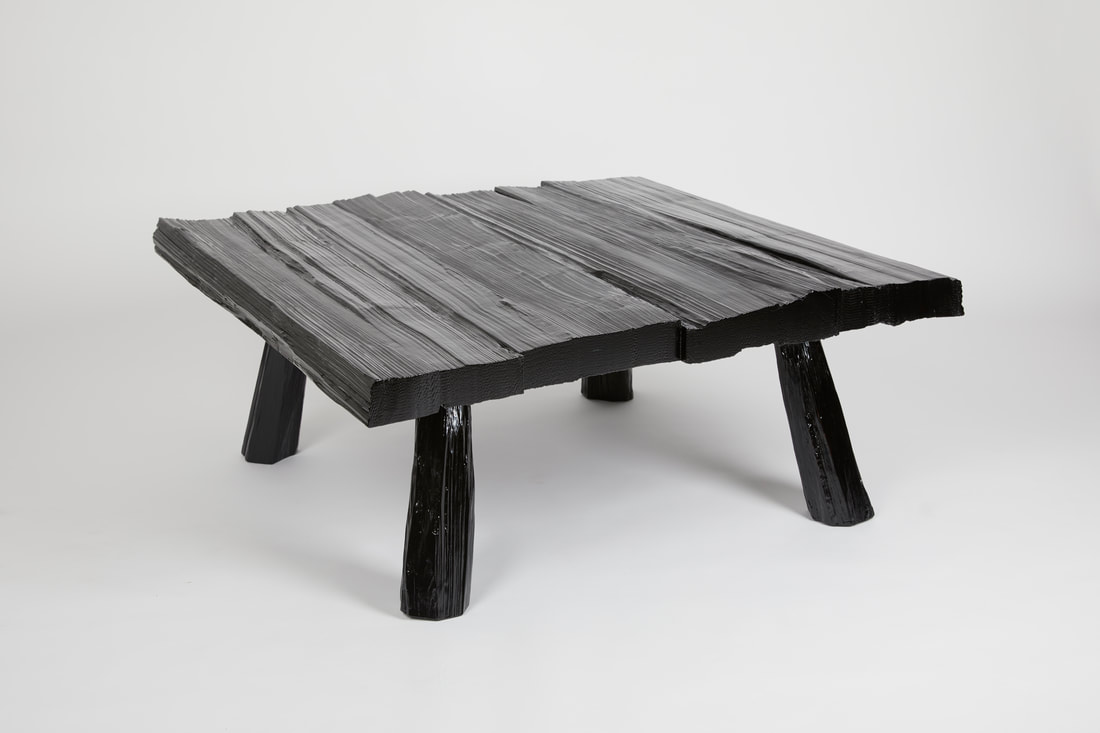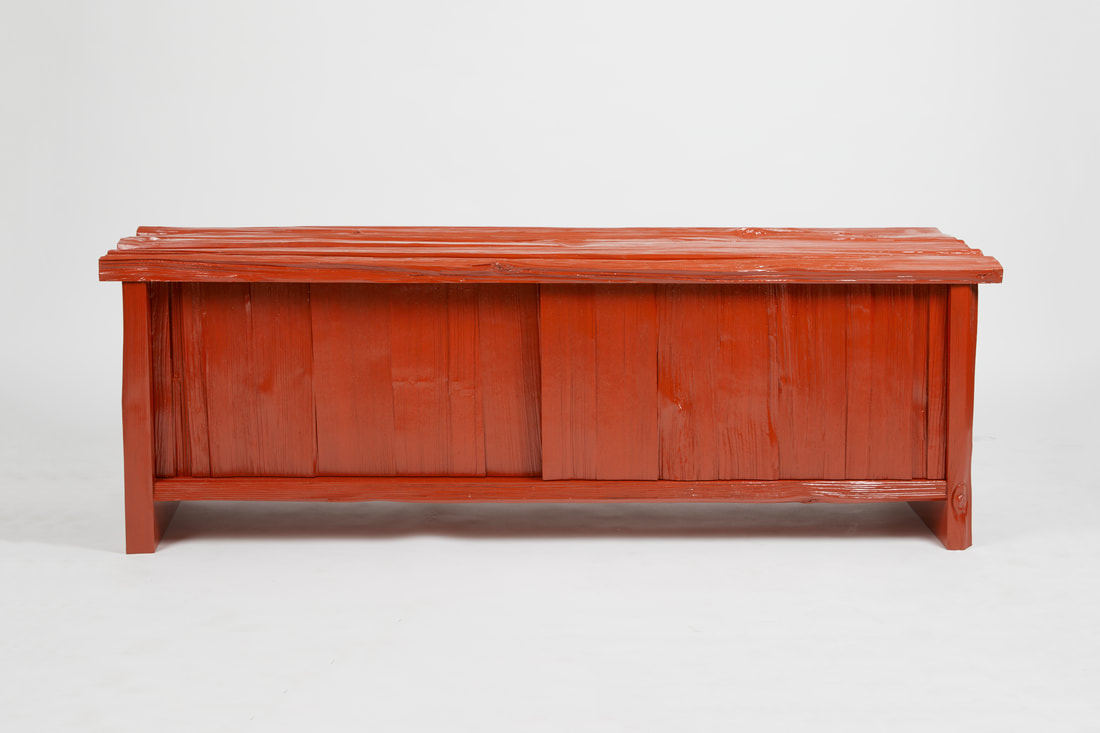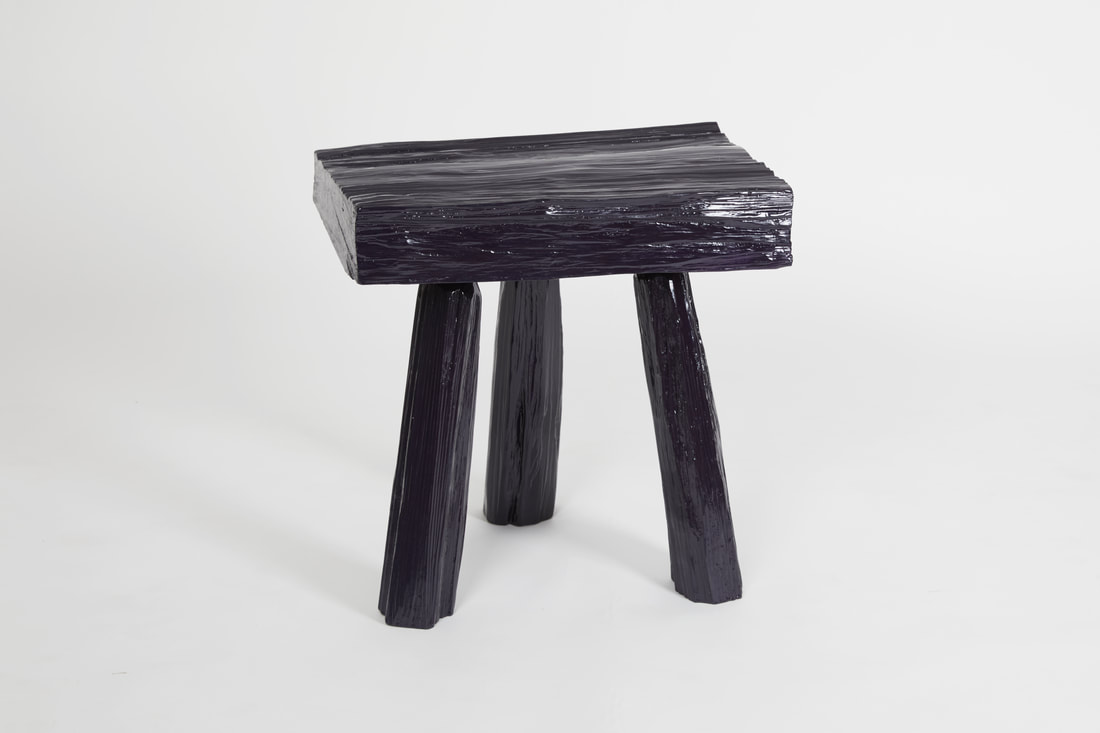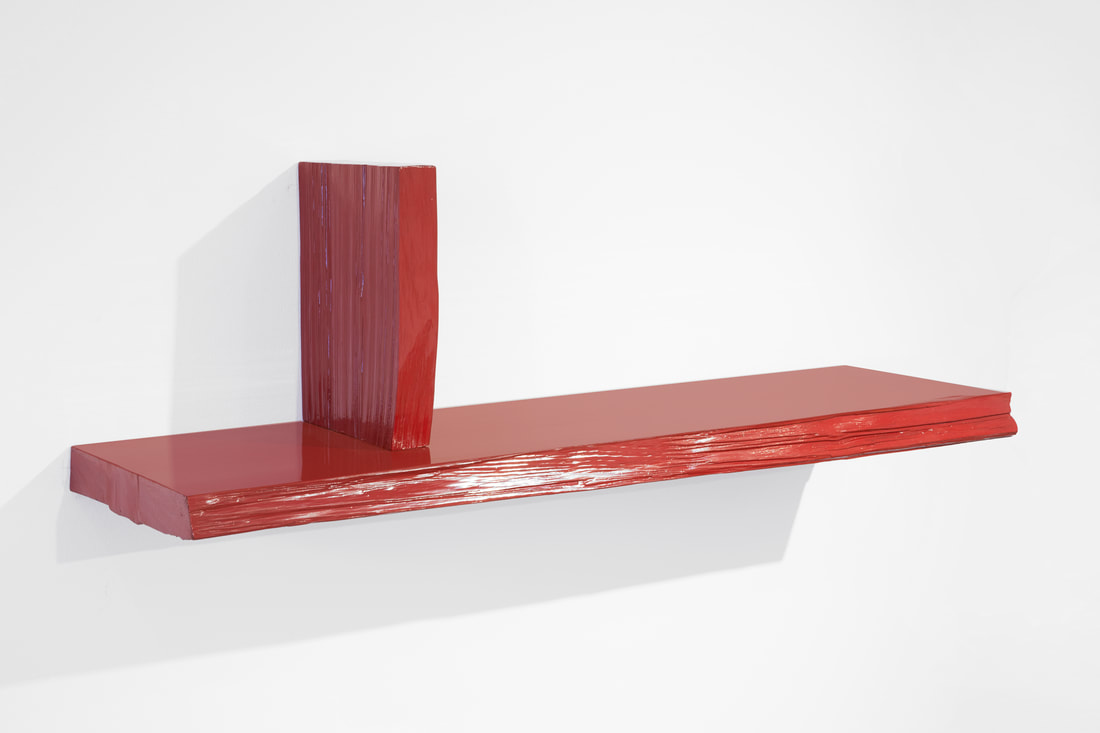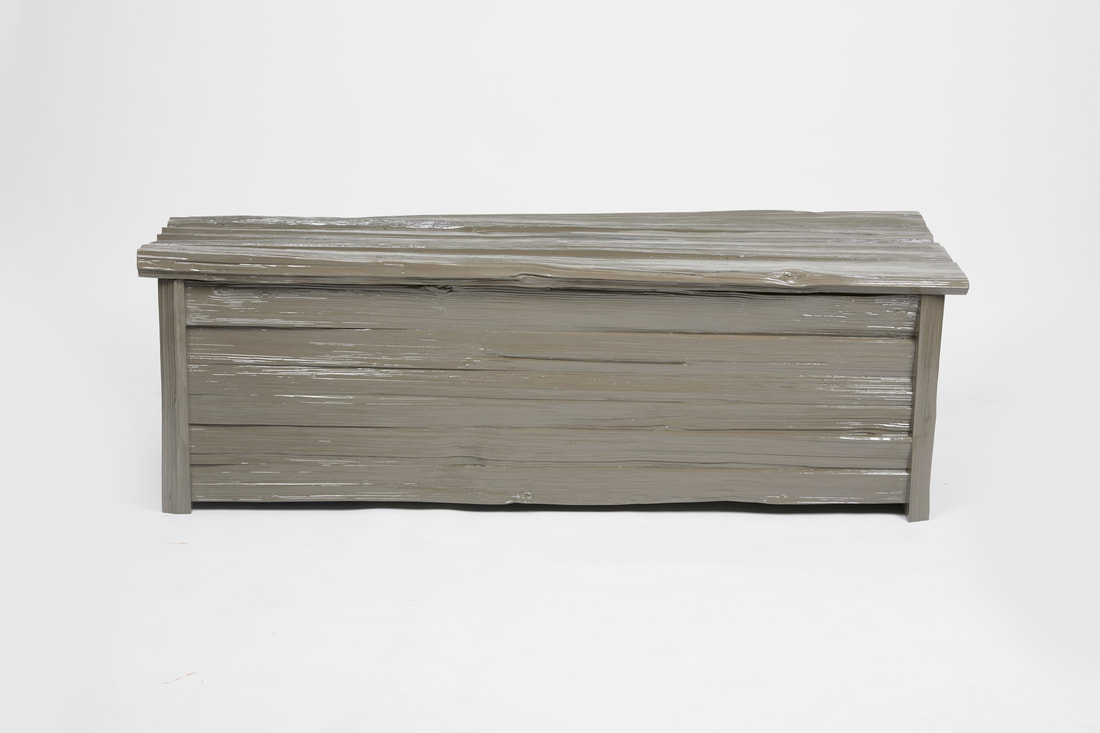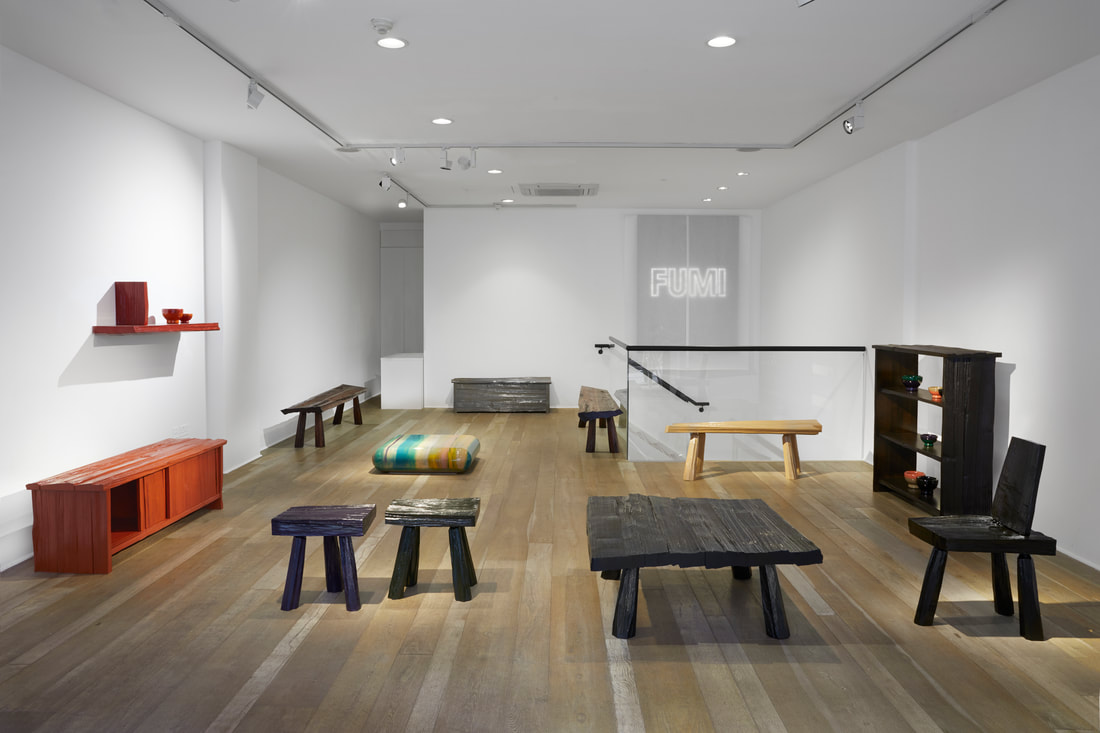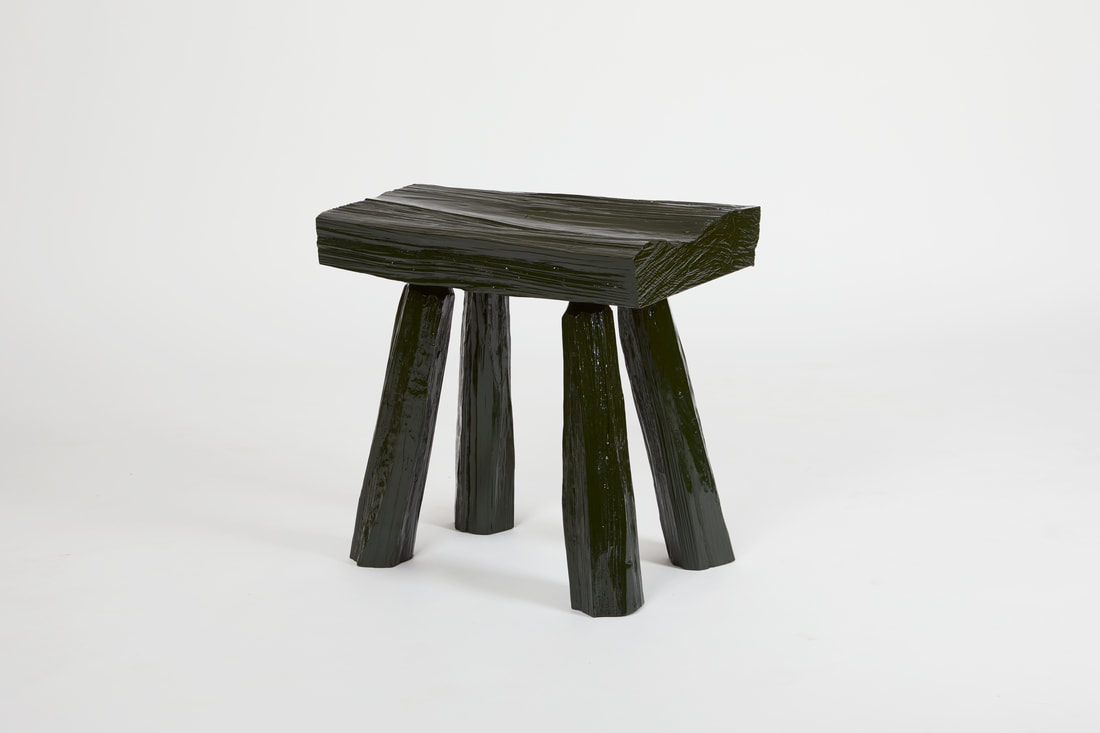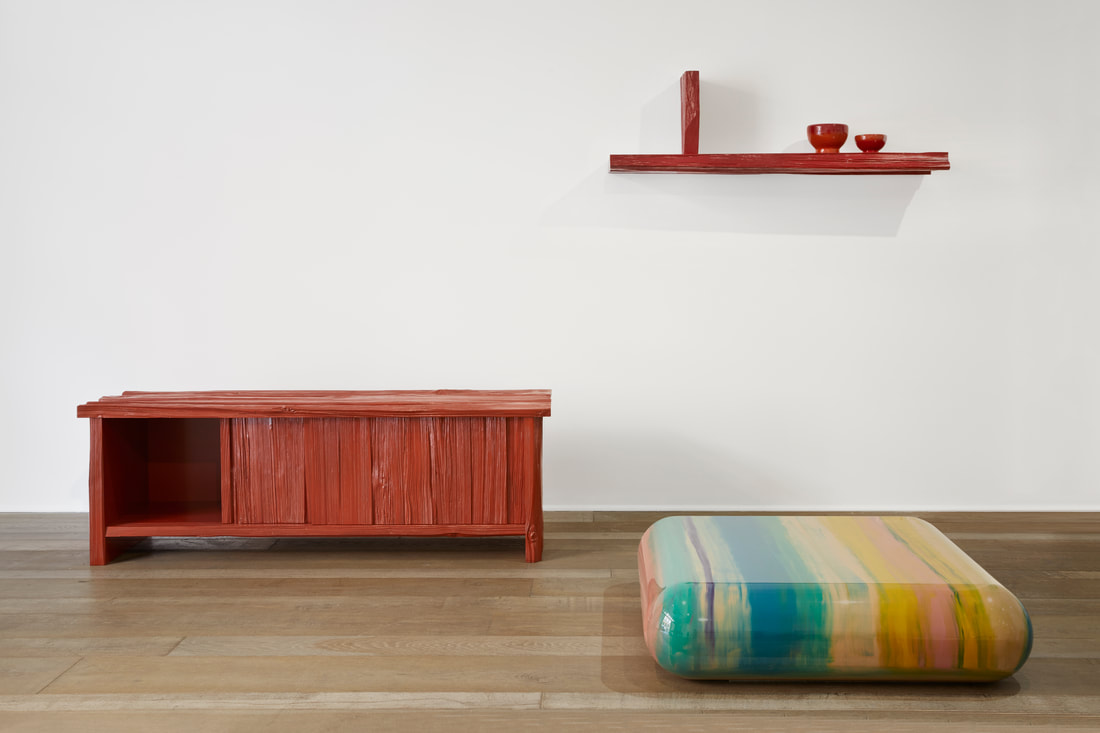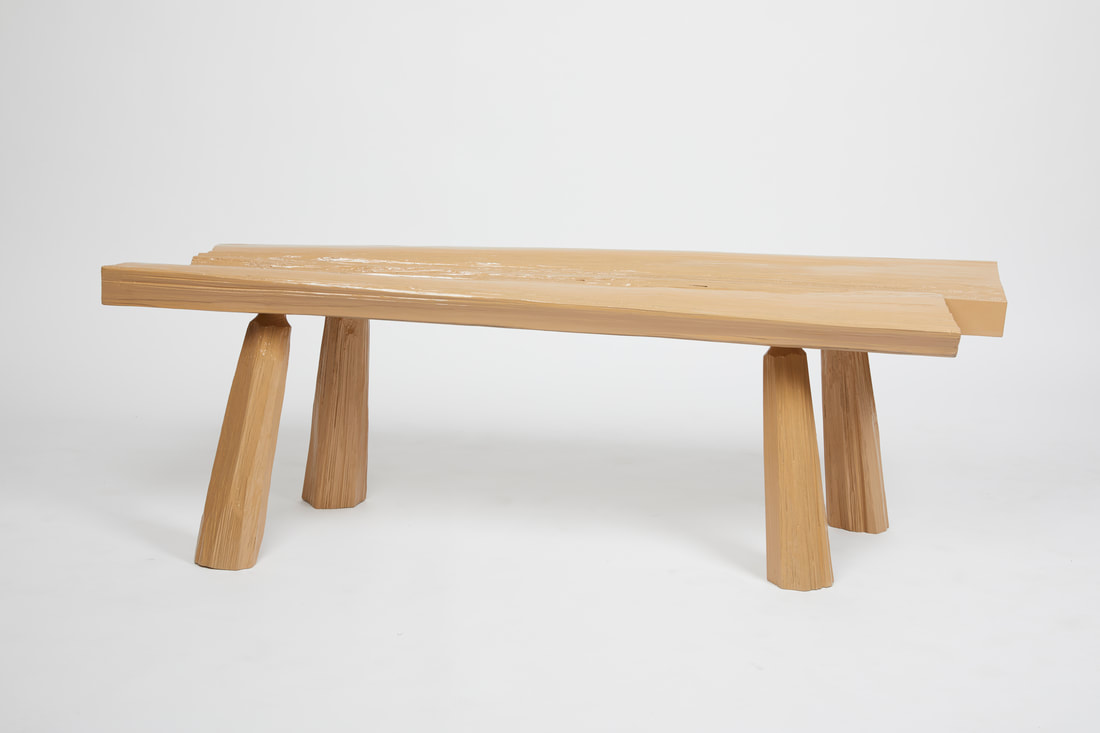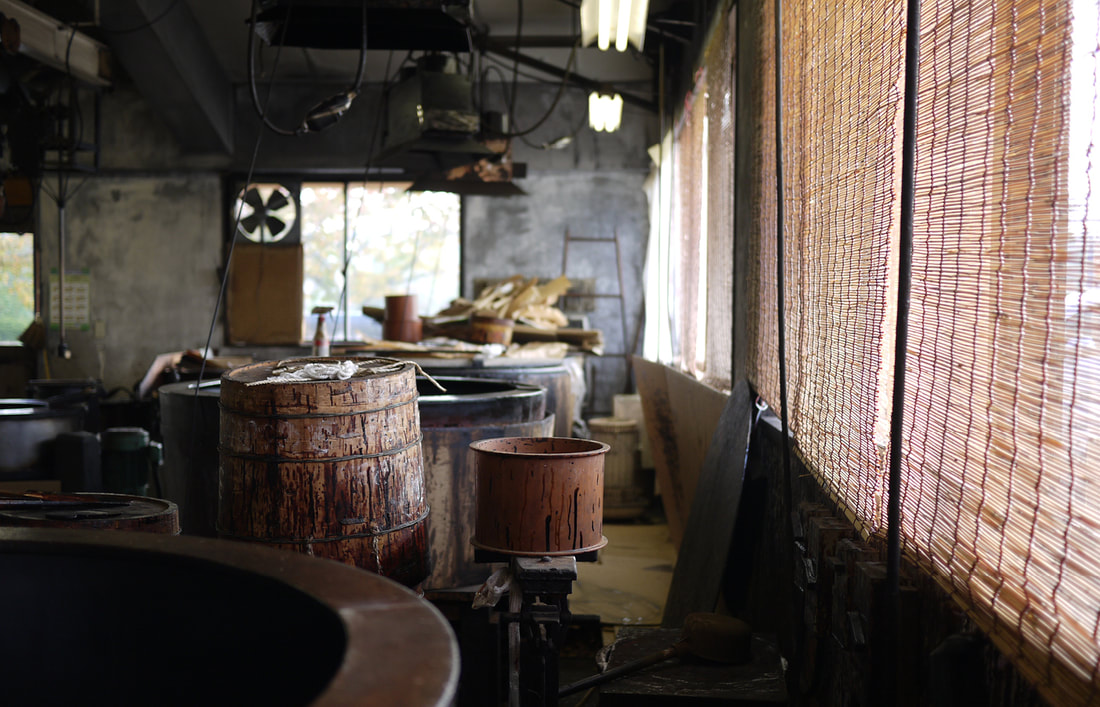The city of Wajima is located on the northwestern coast of Noto Peninsula in Japan, just 90 minutes drive north of Kanazawa. There is nothing special about the city known for its morning market, with the exception that Wajima, because of the wealth of Urushi trees, has become a center for the craft of lacquer as ealry as the 14th century. Unlike the Japanese lacquer practiced elsewhere, Wajima’s lacquer is distinguished for its polished lustrous shining surface, which is traditionally decorated with gold and precious materials. It is called Urushi lacquer.
But don’t expect the ornamented sleek tableware typically produced in Wajima, when visiting Max Lamb’s new solo exhibition ‘URUSHI Wajima’ at London’s Gallery FUMI. Because for the British designer, transformation is the key to his art. Lamb, who has made his name with ambitious ways of transforming materials and methods of production in the most imaginative way (in the past he worked with wood, plaster, stones), has completely transformed the nature of Wajima lacquer. The exhibition contains furniture coated with Urushi lacquer, where the rough surface of the wood, achieved by slpitting the wood down its length using wedges and mallet, is coated with super shiny, sleek, colorful lacquer. Unexpected. Provocative. Not like any lacquerwork you have seen before.
But don’t expect the ornamented sleek tableware typically produced in Wajima, when visiting Max Lamb’s new solo exhibition ‘URUSHI Wajima’ at London’s Gallery FUMI. Because for the British designer, transformation is the key to his art. Lamb, who has made his name with ambitious ways of transforming materials and methods of production in the most imaginative way (in the past he worked with wood, plaster, stones), has completely transformed the nature of Wajima lacquer. The exhibition contains furniture coated with Urushi lacquer, where the rough surface of the wood, achieved by slpitting the wood down its length using wedges and mallet, is coated with super shiny, sleek, colorful lacquer. Unexpected. Provocative. Not like any lacquerwork you have seen before.
Lamb’s pieces of furniture are coated in the traditional urushi lacquer ritual, where resinous sap from the lacquer tree, locally and sustainabley sourced in the Urushi forests i
s slowly coated layer by layer onto the surface of the wood, building an entire colorful coating. While Lamb creates the furniture himself, he than hands it to not one, but to a community of local lacquer craftspeople, each responsible for a particular stage in the labor-intensive process. Lamb’s furniture exemplifies the global nature of 21st-century design and the possibility to utilize traditional craft in the creation of contemporary design.
